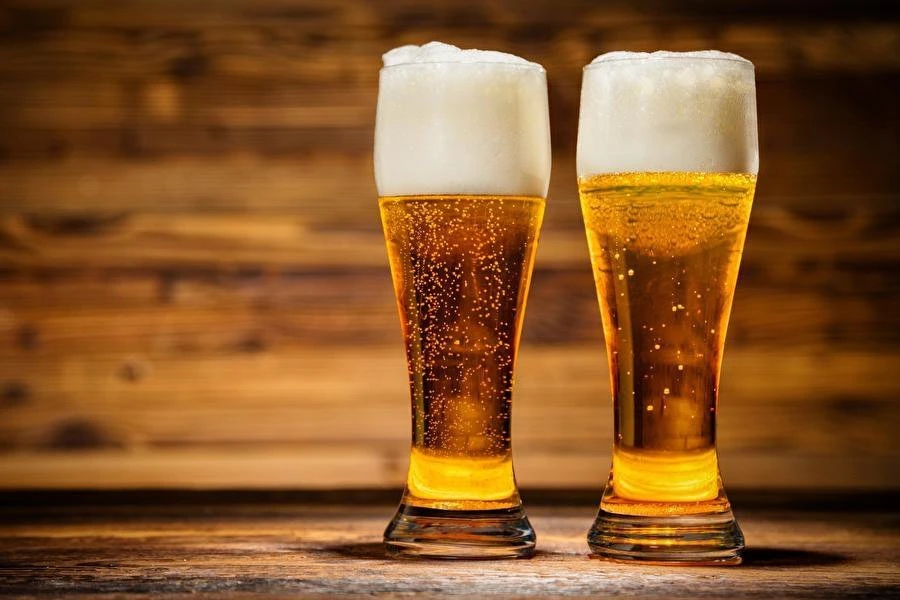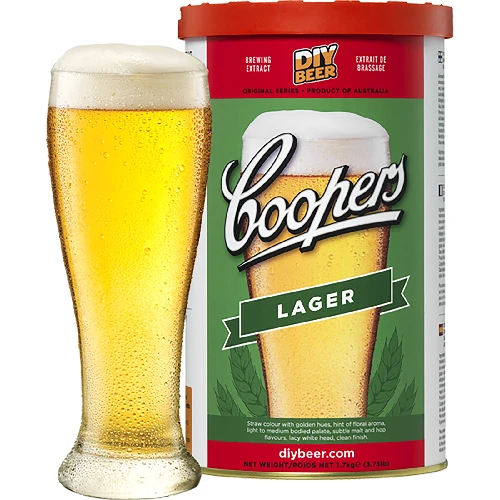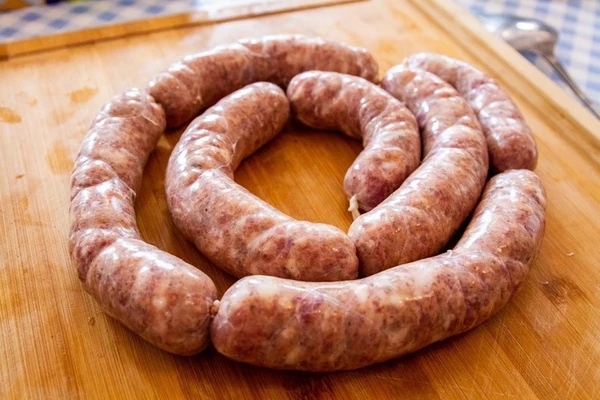A lager is any beer that is bottom-fermented, i.e., fermented at low temperatures of around 6-12°C. Historically, lager beers were only brewed in the winter months because storing them at low temperatures allowed them to retain their shelf life and freshness. Today, however, beers of this type can be made all year round, not only in specialist breweries, but also at home. Therefore, we encourage you to become familiar with a recipe for making this healthy drink.
Preparation:
Grind the malt to crush the grains and break the husks. You can order it in an already fragmented form or you can fragment it yourself with a professional fragmenting machine (alternatively, if you do not have the possibility to use a fragmenting machine, it can be done with a coffee grinder). Pour 14 litres of water into a 40 litre pot and heat it to 65°C. Add the fragmented malt, stir with a long plastic ladle and distribute the malt evenly in the water. Set the temperature to 61-63°C. At this temperature, you will receive mash in 30-60 minutes.
**When commencing mashing, take a sample of the mash onto a white plate – add a drop of iodine starch indicator – the starch in the malt will turn purple. Continue mashing until receiving the so-called negative iodine test – i.e., the indicator not becoming coloured.
Raise the temperature to 72°C, maintaining it for a further 30 minutes. In the meantime, check the degree of starch decomposition with the dye. By changing temperatures, the starch will break down more quickly and the mash will be less sticky and will clarify more easily. The iodine starch indicator should not change colour (it will not turn purple). Then the mashing process can be considered complete. After the set time has elapsed, raise the temperature to 78°C and leave the mash 10 minutes, stirring it from time to time to prevent it from burning.
The next stage is the filtration of the wort. Carefully transfer the mash into a 30-litre filtering container. Wait a while for the so-called filter bed to form. Then filter the mash through a funnel with a gauze/mesh or use the braided filter hose placed in the tank to separate the mash from the wort. If most of the wort has been filtered, the spent grain must be flushed, i.e., water at a temperature of about 80°C needs to be poured over it in order to wash out the sugars left over after mashing. Carry this out using 10-12 litres of water. Evaporate excess water during the hopping process. You can check your sugar levels with a sugar meter.
Wort hopping – 60 minutes
The next stage is hopping the wort. Place the whole wort in a pot and bring it to the boil. Add the applicable dose of MARYNKA Bitter Hops. Do it slowly, as the solution may boil over. Do not cover the pot, there should be evaporation from the wort. After 45 minutes, add the applicable amount of LUBELSKI aromatic hops. After 15 minutes (it takes 60 minutes in total), hopping is complete. When hopping, you can use a cloth for holding hops so that they are not placed directly in the wort. On the other hand, if you boil them directly in the wort, it is necessary to perform filtering later, separating the hops from the wort using a strainer or a braided filter hose. Stir the clear wort vigorously to aerate it and then chill it as quickly as possible. For this purpose, it is best to use an immersion cooler.
Afterwards, measure the sugar level with a sugar meter.
The reading for the wort should be around 12 - 15°BLG. In the meantime, you can prepare the yeast. Place the contents of the bag in water with a temperature of about 25°C. Leave for about 20 - 30 minutes to dissolve. Once the wort has cooled to 15°C, add the yeast. Seal the fermenter tightly and install an airlock half-filled with water. Fermentation should take place at around 6-10°C – these are the best conditions for bottom-fermenting yeast. Due to the difficulty with obtaining that temperature at home, you may increase the temperature to a maximum of 18 degrees Celsius, but it is recommended to keep it lower for the sake of preserving the right aromas and proper complete fermentation of the beer. The best beer comes results from fermenting at 10 degrees Celsius.
After the turbulent fermentation, the young beer is transferred to silent fermentation. Its purpose is to clarify and mature the beer. Siphon the liquid from above the yeast with a hose into a second fermentation tank. The hose should be submerged properly in the wort to avoid aeration and contamination of the beer. After transferring the wort, close the container tightly and leave it for another 7 days at the same temperature. During silent fermentation, you no longer need to use an airlock. Take a beer sample at this time. The sugar meter should indicate 2-4°Blg, which means that the turbulent fermentation is complete. After a week, you can bottle the beer. To do this, add about 6 grams of glucose per litre of beer to make the beer deliciously fizzy. Wash each bottle and caps thoroughly and disinfect them with potassium metabisulphite. You can dissolve the sugar in a small amount of water and add it to the entire batch. You need about 150 grams of glucose for 20 litres of beer. You can also add sugar in the appropriate amount using a sugar measure, directly to each bottle - 3 grams for every 0.5 litre of beer. The bottles should be sealed with a capping device.
After about 4 weeks, the beer should be well carbonated. In practice, the beer 'lagering' time depends on the type of beer. It is recommended to try one bottle every now and then to check when the beer starts to taste good.
What to do for flavour variation?
During quiet fermentation you can add some ginger, honey or raspberry syrup to the beer. The beer will then change flavour accordingly in line with different tastes. When made according to the standard recipe, the beer obtained will be “full light”. We recommend experimenting with different amounts and types of hops, as well as with different malts and additives in order to make the beer unique.
Please note:
1. PLEASE NOTE! All equipment should be properly disinfected and cleaned. To this end, use potassium metabisulphite according to the instructions on the packaging.
2. PLEASE NOTE! Fermentation should take place at around 6-13°C – these are the best conditions for bottom-fermenting yeast.
Due to the difficulty with obtaining that temperature at home, you may increase the temperature to a maximum of 21 degrees Celsius, but we recommend keeping it lower for the sake of preserving the right aromas and proper complete fermentation of the beer.







 Cheese calculator
Cheese calculator



 Winemaking
Winemaking











